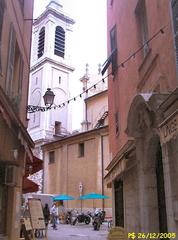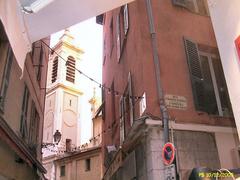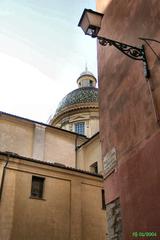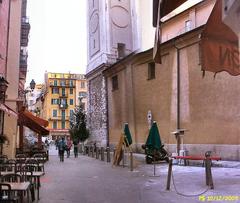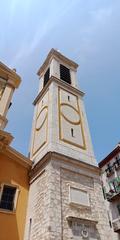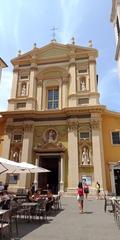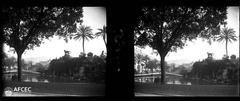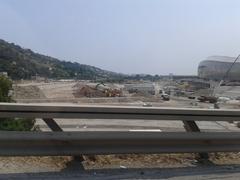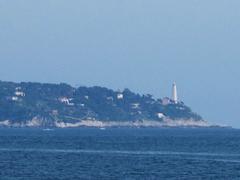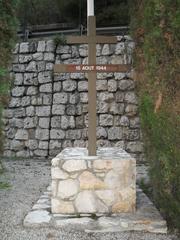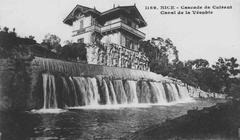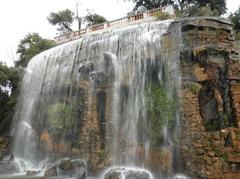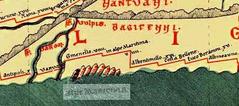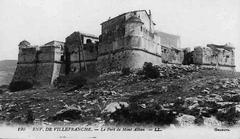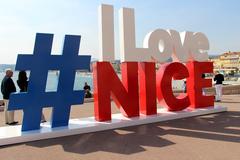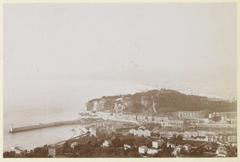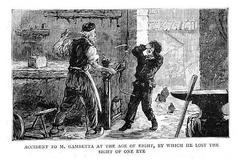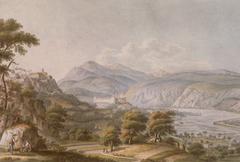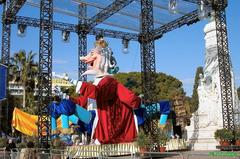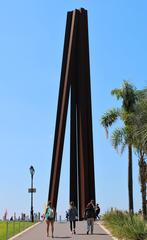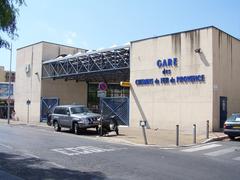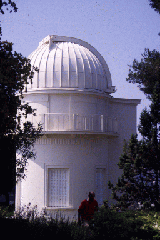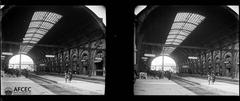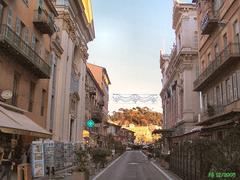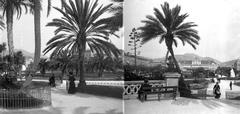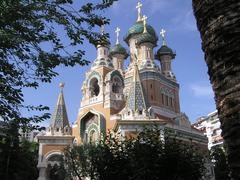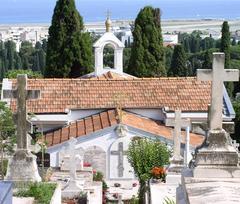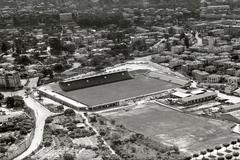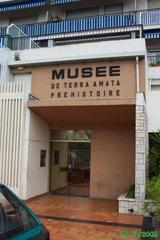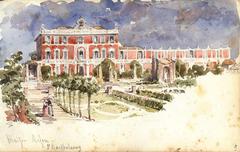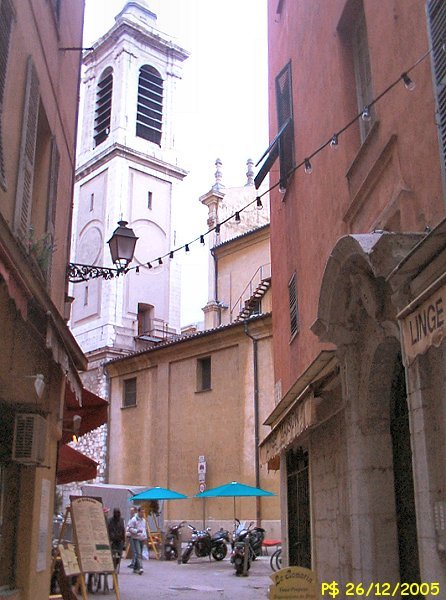
Nice Cathedral: Visiting Hours, Tickets, and Complete Tourist Guide
Date: 14/06/2025
Introduction
Nestled in the heart of Nice’s Old Town (Vieux-Nice), the Cathédrale Sainte-Réparate, commonly known as Nice Cathedral, stands as a magnificent example of Baroque architecture and a vibrant symbol of the city’s religious, cultural, and artistic legacy. Since its origins in the 11th century, the cathedral has witnessed centuries of transformation, serving as both a spiritual center and a living cultural institution. Today, visitors are drawn not only to its stunning façade and ornate interior but also to its role as a hub for festivals, concerts, and significant religious events.
This detailed guide provides everything you need to plan your visit to Nice Cathedral: from its history and architectural marvels to practical details like visiting hours, ticketing, accessibility, and recommended nearby attractions. Whether you are a history aficionado, an art lover, or a traveler keen to explore Nice’s landmarks, this guide ensures you make the most of your experience.
For additional context and visitor tips, consult French Riviera Traveller, Explore Nice Côte d’Azur, and Makemytrip.
Historical Overview
Early Origins and Medieval Foundations
The site of Nice Cathedral has been a center of Christian worship since the 11th century. The earliest known church, St Mary of the Castle, was consecrated in 1049. The arrival of the relics of Saint Reparata in 1060, a youthful Palestinian martyr and the city’s patron saint, marked a significant turning point. By 1075, a chapel was dedicated to her at the castle’s foot (Wikipedia). Throughout the Middle Ages, the church expanded to accommodate Nice’s growing population and elevated status (FrenchRivieraTraveller).
Rise to Cathedral Status and Savoyard Influence
In the 16th century, the bishopric seat moved from Cimiez Cathedral to the Church of St Reparata, cemented in 1590 under Bishop Luigi Pallavicini and Duke Charles Emmanuel I of Savoy (Wikipedia). The patronage of the House of Savoy after Nice’s integration into their duchy in 1388 fostered prosperity and architectural advancement (Snippets of Paris).
Baroque Transformation (17th–18th Centuries)
A major Baroque rebuilding began in 1650 under Bishop Didier Palletis, with Jean-André Guibert’s design inspired by Santa Susanna in Rome. The cathedral was completed in 1685 and consecrated in 1699, reflecting the grandeur and theatricality of Baroque architecture (Wikipedia).
Later Additions and Modern Significance
The bell tower, added between 1731 and 1757, and a 19th-century Baroque Revival façade, further enhanced its appearance. The cathedral was declared a minor basilica in 1949 (Wikipedia). Today, it is recognized as a national monument and a UNESCO World Heritage Site, maintaining its role as a spiritual and cultural heart of the city (France.fr).
Architecture and Artistic Highlights
Architectural Style and Influences
Nice Cathedral is a quintessential example of Baroque architecture, later embellished with Rococo and Neoclassical features. Its Latin cross plan and eastward orientation follow Catholic tradition. The 19th-century Rococo façade is characterized by ornate curves, sculpted ornamentation, and statues of saints (provencelovers.fr). The detached bell tower, crowned with a dome and cross, punctuates the Old Town skyline (thegoguy.com).
The dome, echoing St. Peter’s Basilica, and the use of pastel hues create a harmonious, inviting atmosphere, especially under the Mediterranean sun (visitplacesfrance.com).
Visual: Image of Nice Cathedral’s façade at sunset. Alt text: “Cathédrale Sainte-Réparate façade in Nice showcasing Rococo architecture and bell tower”
Interior Layout and Spatial Experience
Upon entry, visitors encounter a grand nave leading to a central altar, surrounded by ten side chapels dedicated to various saints. The Chapel of the Rosary is renowned for its intricate woodwork and paintings. The presence of three organs, including a grand organ above the entrance, enhances the acoustics and spiritual ambiance (explorenicecotedazur.com).
Visual: Interior shot of Nice Cathedral showing frescoes and main altar. Alt text: “Interior of Cathédrale Sainte-Réparate with frescoes and gilded altarpiece”
Decorative and Artistic Treasures
The interior is adorned with stucco, gilded moldings, frescoed ceilings, and marble columns. The main altar is a focal point, with a stunning altarpiece and religious iconography. Stained glass windows cast colorful light, enhancing the serene atmosphere (thegoguy.com).
Religious Artifacts and Relics
Central among the cathedral’s treasures is the shrine of Saint Reparata, whose relics are preserved in a dedicated chapel (visitplacesfrance.com). Other sacred objects, including chalices, vestments, and liturgical items, are displayed or used during major ceremonies.
Musical Heritage
With three organs, the cathedral is celebrated for its musical events. Regular masses, special services, and concerts feature the choir and organ, providing a rich auditory experience (explorenicecotedazur.com).
Restoration and Preservation
As a registered Historic Monument since 1906, the cathedral has benefited from ongoing restoration efforts. Accessibility improvements include step-free entrances and ramps (provencelovers.fr).
Visitor Information
Visiting Hours
- General Opening: Daily from 9:00 AM to 12:00 PM and 2:00 PM to 6:00 PM. Some variations may occur during religious holidays or special events (explorenicecotedazur.com).
Tickets and Admission
- Entry: Free for all visitors; donations are appreciated (budgetyourtrip.com).
- Guided Tours: Available through local operators; some may require advance booking.
Accessibility
- Ramp access and step-free entrances make the cathedral accessible to wheelchair users and those with mobility challenges.
Dress Code and Etiquette
- Modest attire is expected; bring a scarf to cover shoulders and thighs (lonelyplanet.com). Silence and respectful behavior are requested.
Photography
- Photography is permitted without flash but should not disrupt services or private prayer.
Guided Tours and Audio Guides
- Several local agencies offer in-depth tours. Audio guides can be rented or accessed through the Audiala app.
Location and Getting There
- Situated on Place Rossetti in Old Town, the cathedral is easily reached on foot or by public transport. The nearest tram stop is Place Masséna (serenaslenses.net). Parking is available at Parking des Arts, a 10-minute walk away.
Amenities
- Public restrooms are located in Old Town; cafes and shops surround Place Rossetti.
Nearby Attractions
Enhance your visit by exploring:
- Castle Hill (Colline du Château): For panoramic city views.
- Cours Saleya Market: A vibrant flower and food market.
- Palais Lascaris: A Baroque palace and museum.
- Musée d’Art Moderne et d’Art Contemporain (MAMAC): For modern art lovers.
Visual: Map highlighting Nice Cathedral and nearby attractions. Alt text: “Map showing location of Cathédrale Sainte-Réparate and nearby attractions in Nice”
Seasonal Tips
- Best Time to Visit: Weekday mornings to avoid crowds; June offers mild weather (16–23°C) (wanderlog.com).
- Special Events: The Fête de la Sainte-Réparate in October features local celebrations.
Frequently Asked Questions (FAQ)
Q: What are the opening hours of Nice Cathedral?
A: Generally, 9:00 AM–12:00 PM and 2:00 PM–6:00 PM daily; check for holiday variations.
Q: Is there an admission fee?
A: No, entry is free; donations are appreciated.
Q: Are guided tours available?
A: Yes, through local agencies and with available audio guides.
Q: Is the cathedral accessible for wheelchair users?
A: Yes, with ramps and step-free entry.
Q: Can I take photographs inside?
A: Yes, without flash and with respect for worshippers.
Q: How do I get to Nice Cathedral?
A: In Old Town, accessible by foot, tram (Place Masséna), or bus.
Summary and Final Tips
Cathédrale Sainte-Réparate is a cornerstone of Nice’s historical, religious, and artistic identity. Its Baroque and Rococo architecture, collection of chapels and relics, and vibrant cultural life make it an essential stop for any visitor. With free entry, easy access, and a central location, it is both a spiritual haven and a gateway to the treasures of Old Nice. Enhance your visit by joining a guided tour or attending a special event—and be sure to explore the lively neighborhood surrounding Place Rossetti.
For ongoing travel inspiration and more detailed guides, download the Audiala app and follow us on social media.
